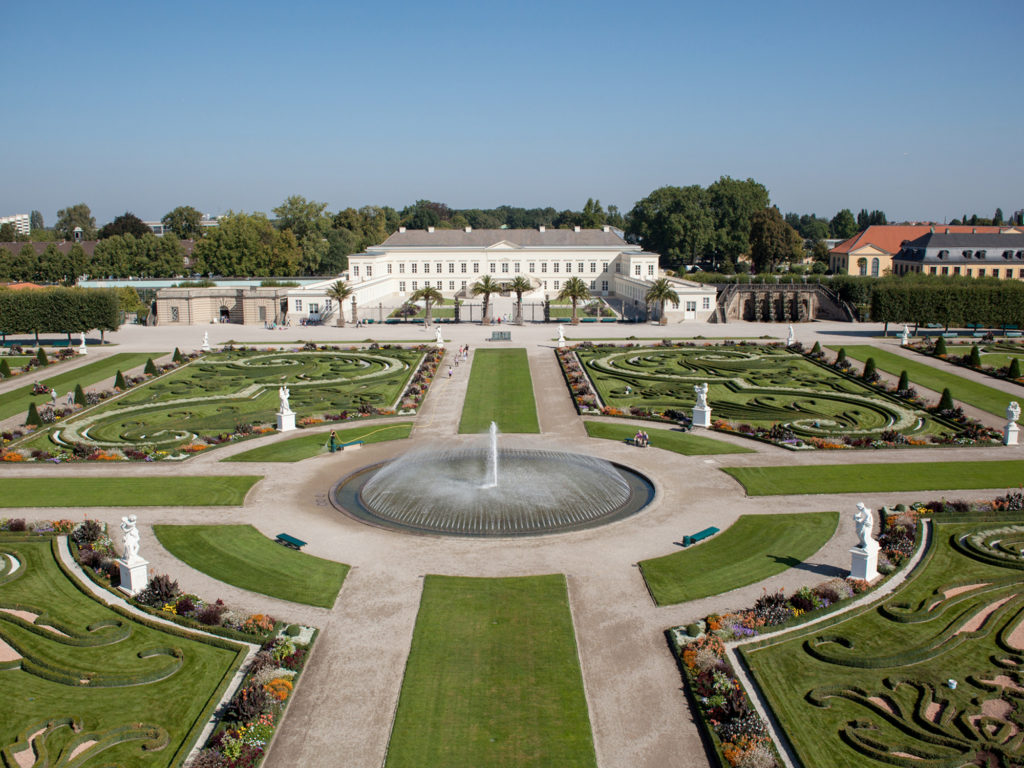The contributions at the symposium will critically reflect on the professional self-image of landscape architects in the past, present, and future.

Professor Christophe Girot discussed the Notion of Artist, Designer or Both – Self-Reflections on the Work and the Profession at the Herrenhausen Symposium in Hannover Palace, Hannover, Germany.
TIMEFRAME
14 – 15 September 2018
PROGRAM
Session 1: Garden Art through the Ages
Session 2: New Research Projects
Session 3: Contemporary Reflections about Art and Garden Art
Session 4: (Garden-)Artist, Designer or Both – Self-Reflexions on the Work and the Profession by Renowned Landscape Architects
Session 5: Future Perspectives
LINK
Originally, the area of responsibility for landscape architecture was based on the premise that the planning and creating of open spaces such as parks and gardens was the business of garden artists. Today, the training of landscape architects and future challenges of the profession include the protection of natural resources and the environment, urban planning or tourism – to name but a few. The international symposium “From Garden Art to Landscape Architecture – Traditions, Re-Evaluations, and Future Perspectives” addresses questions which, based on the idea of garden art, will help to reconstruct its historical development but also discuss the notion and the relevance of “art” in everyday work. The contributions will critically reflect on the professional self-image of landscape architects at the beginning of the 21st century.
Today, the term “Gartenkunst” (“garden art”) is often restricted to historic parks and gardens, regardless of whether these met the artistic demands at the time of their creation, or because they have survived to this day. Which present-day parks and gardens can be regarded as the work of a garden artist? Which criteria would qualify a garden artist? Who would be worth considering?
The first section of the symposium will examine the transformation of the term “Gartenkunst” both nationally and internationally. One core topic will be the radical change during the 20th century when contemporary and historic garden art became separate disciplines.
The second section discusses if contemporary garden art exists or even should exist. Do the fine arts/visual arts of today have the sole right of representation? Where are the boundaries to architecture? What would denote a landscape architect as an artist?
During the third section, internationally renowned landscape architects whose work features distinctive characteristics, will self-reflexively take a stand on the question of whether their creations are garden art or not.
The Herrenhausen Symposium invites professionals working in municipal administration, city planning offices, governmental agencies such as nature conservation agencies, departments for the conservation of historic buildings and in educational institutions like universities – as employees, civil servants or freelancers – as well as scientists e.g. from the field of landscape architecture. “From Garden Art to Landscape Architecture – Traditions, Re-Evaluations, and Future Perspectives” is part of the Herrenhausen Symposia Series initiated by the Volkswagen Foundation which is joined by the German Association of Garden Art and Landscape Culture (DGGL), the Centre of Garden Art and Landscape Architecture at the Leibnitz University of Hannover, the department Herrenhäuser Gärten of the state capital of Hannover, the European Garden Heritage Network and the association “Schlösser and Gärten Deutschlands”.
Image: Coptograph

